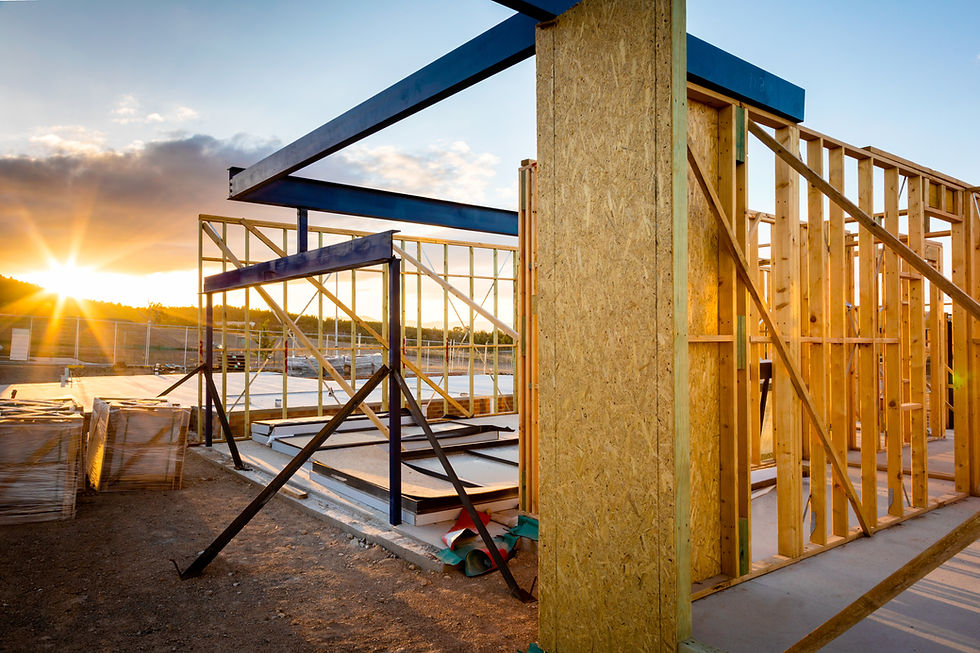
What is CDM 2015?
Building sites, large or small, are by nature hazardous and as a selfbuilder it’s vital to make sure you are doing everything within your power to keep yourself – and anyone who works on your property safe.
The CDM 2015 Regulations, which stands for Construction Design and Management, aim to make health and safety an essential and integral part of the design, planning and management of any project.
They identify, eliminate or control, as far as is reasonably practical, risk to the health and safety of any person working on the construction, affected by it or who will use or maintain the structure once completed.
What about Self-Build?
Do the same health and safety rules and regulations that apply to big time developers, really apply to selfbuilders too? The short answer is, in most cases, yes.
When does it apply?
CDM 2015 applies to any building project where one or more are employed to carry out work.
The key word is ‘employed’. So, if a self-builder does all the work on their project themselves and subsequently moves into the finished property, the build is classed as a DIY project. CDM 2015 doesn’t apply because no one involved is ‘at work’ (as defined by the Health and Safety at Work, etc Act 1974).
As soon as someone is employed to work on a project, CDM 2015 regulations kick in.
Under this legislation, legal responsibilities or duties for health and safety lie with different duty holders:
-
the client (domestic and commercial)
-
the designer
-
the principal designer
-
the principal contractor
-
contractors, and
-
workers.
Why it’s important?
Building sites are potentially hazardous – Around a quarter of fatal injuries to workers in 2021/22 were in Construction (30 deaths).
Complying with CDM 2015 will mean you have done all you can to ensure your site is safe – the foundation of a successful self build. Non-compliance could see you breaking the law and potentially adding to those HSE statistics.




What Self Builders need to do
Self-builders initially come under the client category of CDM.
Client – commercial
If you plan to sell the property on completion or you are carrying out the work for a business purpose, you are classed as a commercial client and as such have full responsibility for CDM 2015 client duties.
Client – domestic
If you are building a home for yourself, and it is not built as part of a business, you are classified as a domestic client.
Domestic clients fall broadly into two camps:
Self-builders who appoint others to help them
On a very small project this might be a single contractor to design (designer) or carry out construction work (contractor).
On larger contracts with multiple contractors this would be a principal designer for the planning stage of the build (pre-construction) and/or a principal contractor for the construction phase of the project (be aware that you need to ensure 'competence' and this would include understanding duties under CDM).
Once appointed, either the designer or contractor will assume the domestic client’s duties in addition to their own.
Selfbuilders who project manage their own project
This type of selfbuilder, have duties under CDM 2015 because they are employing trades directly and are controlling/coordinating the work on site. Here, they will be expected to show sufficient health and safety capability to meet the requirements of CDM 2015.
CDM addresses preventative measures and good practice on construction sites – for example, appropriate welfare facilities (eg toilets, and somewhere warm and dry for breaks), site security, and emergency procedures, stability of structures, traffic routes, fire detection and firefighting.
You would still be entitled to expect individual contractors to plan, monitor and manage their element of the work in compliance with the CDM regulations.
Construction Phase Plan (CPP)
CDM 2015 requires every project to have a CPP in place before construction starts.
This records the arrangements for managing health and safety risks associated with the construction and provides the basis for communicating this essential information to all those involved.
F10
Construction works often need to be notified to the HSE using a form F10.
Appointing your team
Larger building contractors and professionals such as architects, building surveyors and engineers are likely to be aware of the importance of CDM 2015 and the relevant roles and responsibilities.
Smaller building firms, as well as designers, that focus solely on small domestic projects may not be as well informed. Therefore, it is vital for self-builders to get sensible advice on health and safety management.
If you decide to manage your build with little experience of construction project management and site safety, then SGS can help keep you compliant. If you have employed a building company its still worth getting advice to make sure that they have covered off yours and their duties.
Services
From a full Health & Safety service for the duration of your build to making sure the initial paperwork is in place we have a service to guide you, or your builder, through CDM.
Experienced in working with Construction companies, large and small, including those Project Managing Self Builds, we can tailor make a service that fits your needs and your budget.




